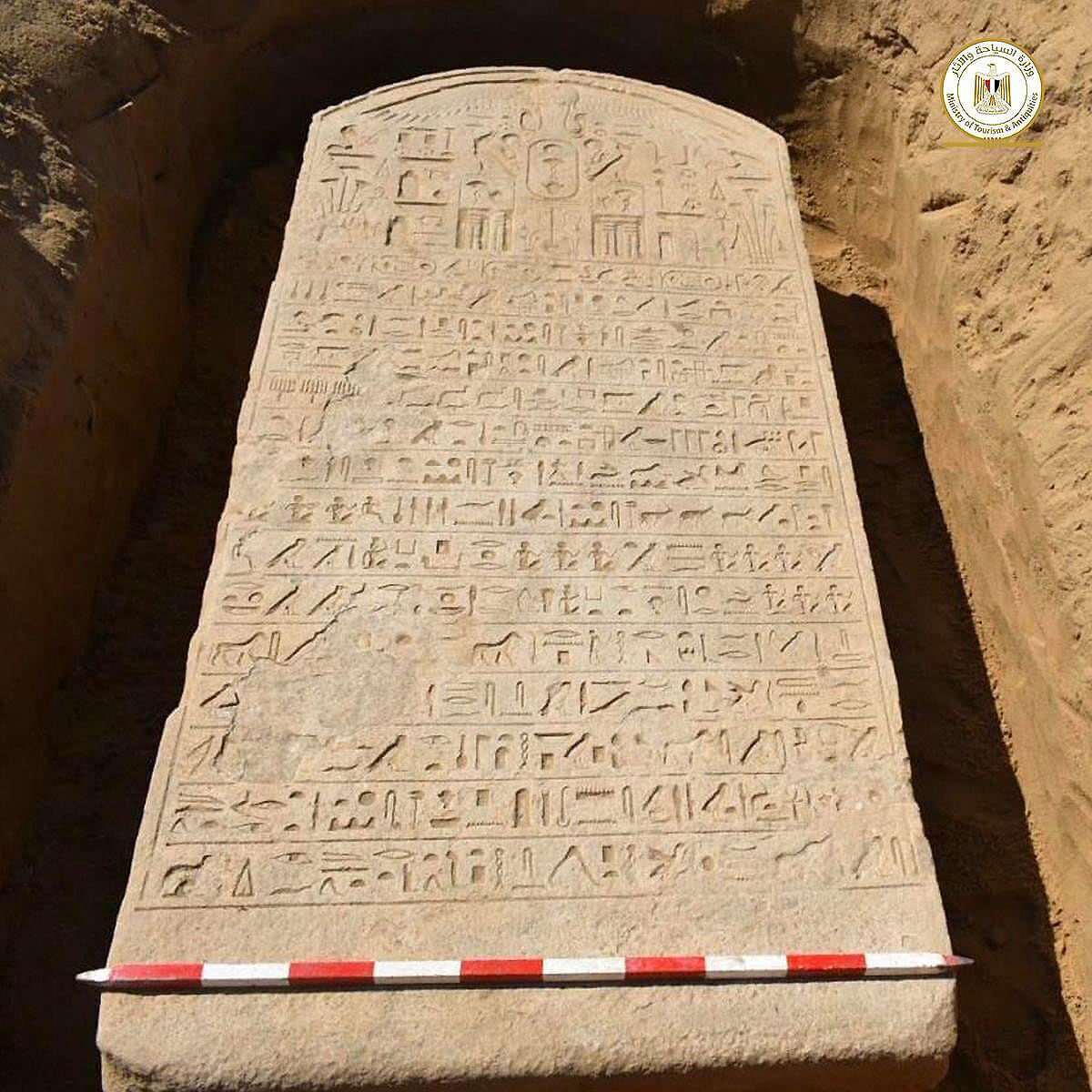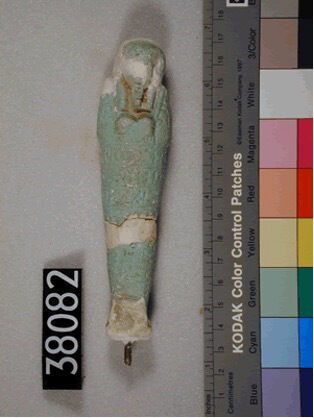A farmer preparing his field for cultivation in Egypt’s Ismailia governate (on the west bank of the Suez) was stunned to discover a large stone object covered in hieroglyphs. The farmer immediately contacted the Egyptian Tourism and Antiquities police, who retrieved the artifact. The artifact has since been identified as a victory stele belonging to sixth-century b.c.e. biblical pharaoh Apries (Hophra).

The stele is a large sandstone memorial slab. This particular stele measures 230 centimeters (7.5 feet) tall, 103 centimeters (3.4 feet) wide and 45 centimeters (1.5 feet) thick. Carved at the top is a winged sun disk, associated with the sun god Ra, under which is the cartouche (hieroglyphic royal seal) of the pharaoh Apries. The stele contains 15 lines of hieroglyphics. These have yet to be translated, although work has already begun on revealing the stele’s secrets.
Pharaoh Apries is known to have begun his reign in the early sixth century b.c.e. as the fourth ruler of Egypt’s 26th dynasty. The common name for this pharaoh, Apries, is actually the Hellenized version of his name. Pharaohs of Egypt possessed several names; of those, a pharaoh’s cartouche included only the two most important. The first of these was the “nomen,” the name given him at birth. Apries’ nomen was Wahibre, meaning “constant is the heart of [the god] Re.” The second name is the “prenomen,” or “throne name,” which a pharaoh received upon ascension to the throne. Apries took the throne name Haaibre, meaning “jubilant is the heart of Re forever.”

In the Bible, Apries is known by the alternate Hebrew transliteration, Hophra. Archaeologist and Egyptologist Kenneth Kitchen notes in his book On the Reliability of the Old Testament: “Both the Hebrew and Greek forms of his name [Hophra/Apries] show abbreviation by omission of the first syllable, Wa [Wa-hibre].” The name “Hophra” is an anglicized version of the original Hebrew name. A more faithful English rendition of Hophra, as noted by Strong’s Bible Concordance, would be Hāp̄ra. (It is also of note that the letters “p” and “b” are commonly interchangeable consonants, cross-culturally.)
There have been several other discoveries relating to Apries. In 2011, the Egyptian military unearthed two pieces of red sandstone inscribed with the pharaoh’s cartouche. In 1909, the British School of Archaeology in Egypt discovered Apries’s palace, which included several pillar capitals bearing his name. University College London’s Petrie Museum of Egyptian Archaeology also has several artifacts with Apries’s name.

In Scripture, Hophra is the pharaoh whom King Zedekiah allied with against Babylon’s King Nebuchadnezzar. This is what provoked Nebuchadnezzar’s final invasion of Judah (Ezekiel 17:15-18). Hophra, for his part, attempted to break Nebuchadnezzar’s final siege of Jerusalem (Jeremiah 37:5). Also, Jeremiah prophesied that God would “give Pharaoh Hophra king of Egypt into the hand of his enemies, and into the hand of them that seek his life …” (Jeremiah 44:30).
After the fall of Jerusalem, ancient historians like Herodotus recorded that Apries sought to take the city of Cyrene. The ensuing military disaster sparked a civil war that saw one of his generals, Amasis, rise up against him. Exactly how Apries met his end is still something of a mystery. Herodotus wrote that the victorious Amasis took Apries as a royal prisoner, eventually giving him over to the disgruntled Egyptian people who strangled him. Josephus, in turn, wrote that Nebuchadnezzar invaded Egypt, killed the king (presumably Apries), and installed another (Amasis). Some archaeologists believe Apries fled to Babylon before returning in a doomed attempt to retake the throne. Any of the above would fit with the pharaoh meeting his end at “the hand of his enemies,” just as Jeremiah prophesied.
According to Mostafa Waziri, secretary general of the Supreme Council of Antiquities in Egypt, the newly discovered stele seems to be an account of a military campaign Apries made east of Egypt. Hopefully, the coming translation will shed light on the murky events and history surrounding this fascinating pharaoh—one of five biblical pharaohs confirmed by archaeology.

